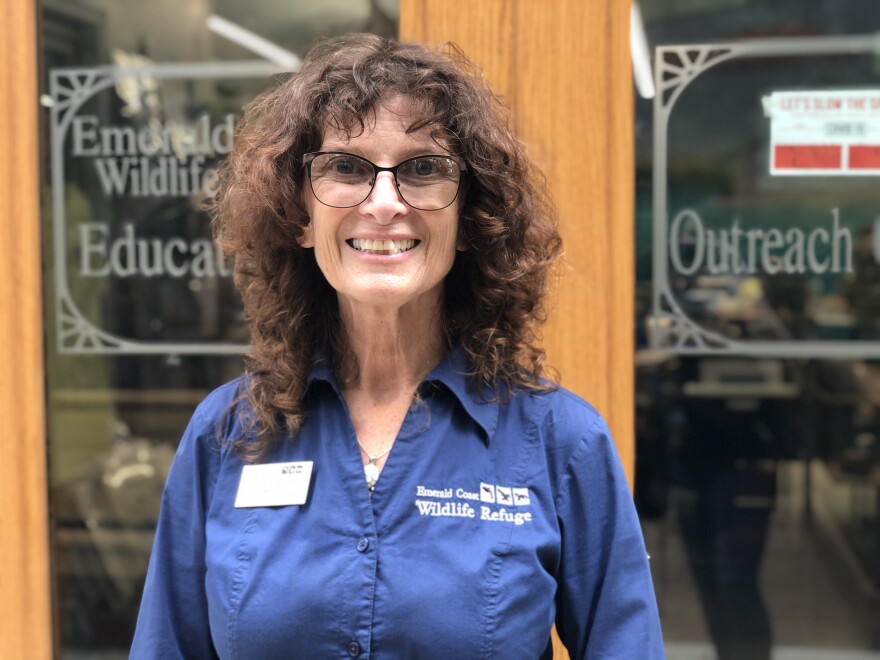After closing their doors in February due to the coronavirus pandemic, the Emerald Coast Wildlife Refuge is open again in a new location, but with the same mission.
ECWR’s Dec. 7 grand opening in Holley-Navarre was short-lived as businesses closed their doors. Out of caution and respect, the nonprofit closed to the public and canceled its annual golf tournament fundraiser. Then, about three weeks ago, the refuge’s marine mammal recovery truck was stolen.
But things are looking up. The refuge is again open to the public where people can tour the property, visit with the ECWR ambassadors, and learn more about conservation and caring for wildlife. And the truck was recovered Tuesday afternoon — a big relief said Stormy Andersen, ECWR executive director.

Stormy and her husband, Bill, have been longtime volunteers with the refuge. In 2017, they donated the undeveloped property on Clopton’s Circle, off State Road 87 in Navarre. With its Florida native plants and open space, it was a better fit for the refuge and the animals that live there.
“We saw that there was a need for something better than what the refuge had and we were in a position that we could help,” said Stormy.
The new facility cost nearly $1 million, said Bill Andersen, emeritus board director. From the post and rope barriers made by local Eagle Scouts to the paved patio and pollinator garden from the Navarre Garden Club and a local Girl Scouts Troop to the countless donations there was a lot of community buy-in, said Bill.
“We’re a really inclusive organization and we wanted this place to be for our community,” he added. “We had faith when people saw the vision for the animals that they would step up. In time, we want to open the facility to be a venue for organizations or book clubs.”
The mission of ECWR is to rescue, rehabilitate, and release animals back to their homes. But not every animal is able to be released. Like Sheldon, the African spurred tortoise, who was found abandoned at a truck stop with a deformed shell, or Aries, the red shouldered hawk, who is dependent on humans for care. She was gifted to ECWR from the Audubon Center for Birds of Prey after Bill completed an apprenticeship at the center last year. At the new facility, the public can tour the site and visit critters like Sheldon and Aries. Visits weren’t possible at the old location.
So far this year the rescue has cared for more than 730 animals. There are currently 130 in their care. Staff, interns and volunteers have their hands full caring for a menagerie of baby animals including opossums, raccoons and birds.
“Despite COVID-19, we’ve had a huge influx of animals,” said Michelle Pettis, director of medical care. “It could be because more animals just live out in this particular area of the county.”

It’s not always about cute, baby animals, however. In January, the refuge recovered a dolphin with a bullet in its left side along Pensacola Beach. They performed a necropsy and provided information to NOAA’s Division of Law Enforcement. Last year, they responded to a stranded Gervais’ Beaked Whale. Since little is known about the protected species, they worked with the Smithsonian to provide tissue samples.
“It’s not just rescuing baby squirrels,” said Bill. “The refuge is trying to further the science to better help conserve and manage these often very highly endangered or threatened species.”
Pettis has worked at ECWR for three years. After working in an old fire station in dire need of repair, she likes having a clean slate.
“It opens the door for us to create how we want everything to flow,” she said. “We’re really paving the way for the whole first year of the facility so that’s really exciting.”
The new facility also allows for more internships. On Tuesday afternoon, there were six interns working at the refuge — a record said Stormy.
Shelby Andersen (no relation) has been an intern for just about three weeks. She’s studying biology and wants to work in zoos. Working at the refuge on the educational side has broadened her perspective.
“I’ve learned a lot more about education for the public; how to inform people on wildlife they see in their backyard; and how to care for that specific animal instead more the big, broad stuff you see at the zoo,” she said.
ECWR has worked with schools to offer education on wildlife conservation. Now, with the new facility, they can offer programs at the refuge once field trips and group gatherings can resume.
Stormy had a vision of what the property could become. Seeing it realized, she’s still in awe.
“When I go home at night, I still get the chill bumps,” she said. I don’t feel like I’m anyone so special that it could’ve only been me. To come from where we were … and to see the fulfillment of the idea … I take great pleasure in having been a little part of it.”
ECWR is located at 3051 Clopton’s Circle. Watch the Facebook page for hours of operation as they may change.












